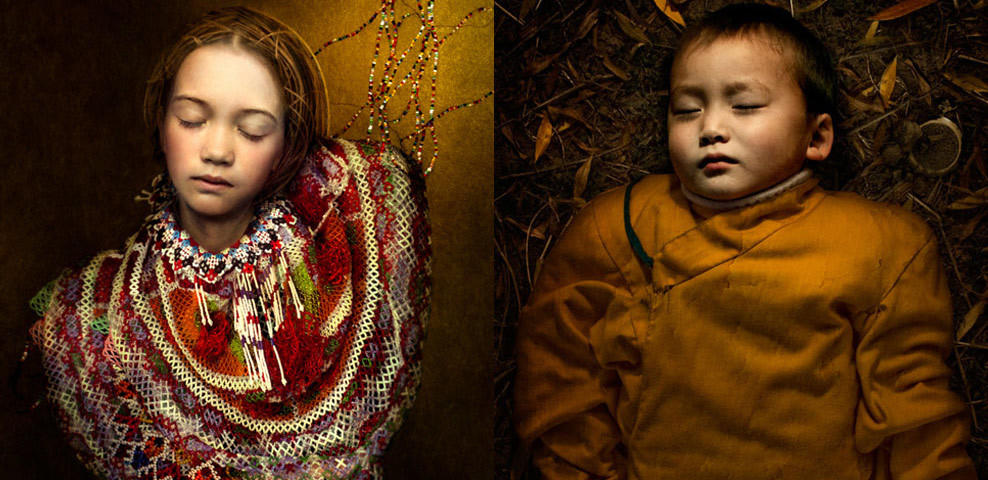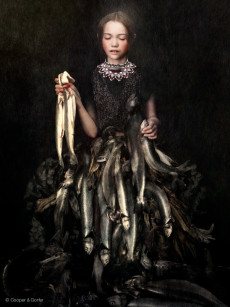 Artist, curating, and publishing-duo Cooper and Gorfer source the world’s most far-flung places and people to create stunning visual narratives – with a subplot.
Artist, curating, and publishing-duo Cooper and Gorfer source the world’s most far-flung places and people to create stunning visual narratives – with a subplot.
Roving compendiums that incorporate photography, film and text are curated into independent gallery shows and art books. Within, fantastical-seeming, often heartbreaking lives lived are brought to the foreground; cryptically encoded and elaborately adorned through meticulous costume design, art direction and digital manipulation.
Key to their efficacy, though, is the interplay within the works between the subject’s often unimaginable travails and the onlooker’s auto-biographical baggage. This depiction: of the slippery nature of perception and reality – enables the viewer to upgrade from passive observer to intimate companion on these compelling voyages into the soul.
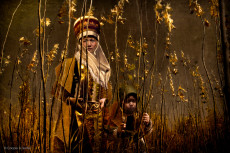 Can you describe your childhoods in your respective native towns – were you both raised in artistic families?
Can you describe your childhoods in your respective native towns – were you both raised in artistic families?
I grew up in Vienna, Austria, but my family is from the countryside, at the foot of the Alps, known for its thick pinewood forests. My siblings and I spent a lot of time there on my grandparent’s small family farm, a place with a long history behind it. That was the meeting point of the extended family. There were always kids around; cousins, neighbors and friends. When I see myself as a child, I see myself there.
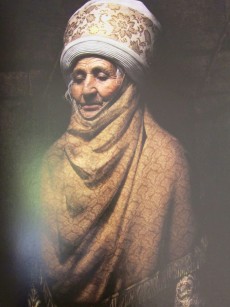 Grandmother was the heart of the farm. She was a gifted storyteller, roaming freely between fiction and reality and for us, the distinction mattered little. Her stories were usually connected to the farm itself, the surrounding nature, our family history or those who had lived there before. It was a wild mix of folk tales, stories from the war and memories of the happiness and hardship of her own childhood. Her memories became our tales and those tales, our memories. And with every story, the place grew for us: a very real, yet very magical place. The memory of this inspires me still.
Grandmother was the heart of the farm. She was a gifted storyteller, roaming freely between fiction and reality and for us, the distinction mattered little. Her stories were usually connected to the farm itself, the surrounding nature, our family history or those who had lived there before. It was a wild mix of folk tales, stories from the war and memories of the happiness and hardship of her own childhood. Her memories became our tales and those tales, our memories. And with every story, the place grew for us: a very real, yet very magical place. The memory of this inspires me still.
SC I grew up in Pittsburgh, PA. My mother is a statistician and my father an artist and professor in architecture. My home definitely had an artistic vibe. It wasn’t uncommon to be surrounded at the dinner table by my father’s most recent 3 x 3 m giant charcoal-drawings.
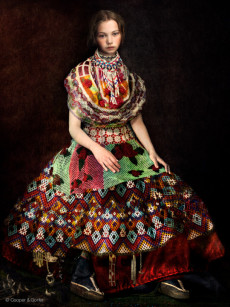 During my teenage years the city was shifting away from industry and the last of the steel mills and blast furnaces were but carcasses in the landscape. I got my first camera when I was 16 and spent most of the time breaking into the last of the abandoned sites with friends, photographing the traces of what was left. I remember one day coming across a giant abandoned factory room where the floor was covered in thousands upon thousands of sparkling metal spoons. In the middle stood a perfect line of about 10 carefully placed platform shoes. I remember a feeling of being instantly hyper-aware; who had created this? And, are they still in the building? I experienced simultaneous fascination and terror; a kind of psychopathic introduction to installation art.
During my teenage years the city was shifting away from industry and the last of the steel mills and blast furnaces were but carcasses in the landscape. I got my first camera when I was 16 and spent most of the time breaking into the last of the abandoned sites with friends, photographing the traces of what was left. I remember one day coming across a giant abandoned factory room where the floor was covered in thousands upon thousands of sparkling metal spoons. In the middle stood a perfect line of about 10 carefully placed platform shoes. I remember a feeling of being instantly hyper-aware; who had created this? And, are they still in the building? I experienced simultaneous fascination and terror; a kind of psychopathic introduction to installation art.
What art were you fond of seeing/enjoyed making as children?
NG Some years ago my mother gave me a collection of small papers. I had forgotten about these. On each are drawings of sad animals with drop-shaped tears streaming from their eyes. So deep is their sadness 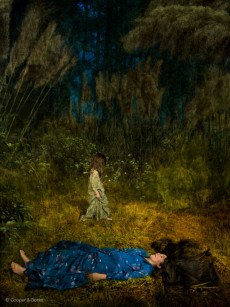 that the tears form small puddles at their feet. Above each animal’s head is a thought bubble – a cloud shaped memory containing the story behind their sadness.
that the tears form small puddles at their feet. Above each animal’s head is a thought bubble – a cloud shaped memory containing the story behind their sadness.
When I saw these again, I remembered how I sat at the wooden desk in my parents’ bedroom, immersed in visualizing the stories behind them. I must have been around seven. I am not sure what motivated me to draw them, but even as a child I have been intrigued by stories and how to visualize them. And I have been intrigued by melancholy. I think many children are.
SC As a child, I was obsessed with building miniature worlds and sets – complete with all of the details and accessories intact; places with which I’d play for hours, created out of discarded boxes, bottles, wooden planks and fabrics left for waste. I also remember spending endless hours designing vomit-inducing rollercoasters that I would display to my family after dinner.
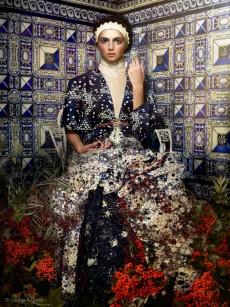 Regarding art, the first experience that floored me was visiting a Van Gogh exhibition at the Metropolitan Museum of Art in New York, in the early 1980s; seeing the paint and its thickness practically lift itself from the canvas.
Regarding art, the first experience that floored me was visiting a Van Gogh exhibition at the Metropolitan Museum of Art in New York, in the early 1980s; seeing the paint and its thickness practically lift itself from the canvas.
As a teenager I loved to visit The Mattress Factory in Pittsburgh, and I remember vividly a room that simulated the great Pittsburgh Flood of 1936 – an event recounted to me repeatedly by my Grandmother, who spoke of salvaging and ironing out soaked money for days after. And I especially remember the first Carnegie International show in Pittsburgh where I saw the photographs of Richard Avedon that documented the emotionally charged first-hours of the Berlin Wall coming down.
Who/what inspired each of you to work in photography?
NG & SC Ironically, photography was not the catalyst for our work. In our initial collaboration, I (Sarah) 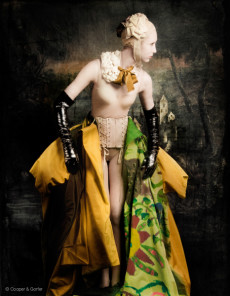 had departed from photography and I (Nina) was working in graphic design while taking a pause from architecture.
had departed from photography and I (Nina) was working in graphic design while taking a pause from architecture.
We started our collaboration based on a mutual fascination for narrative structures, visual storytelling, and the influence and expression of culture in art, and, last but not least, upon our love of books. We inspired each other through mood boards that utilized music, art, design, graphics, and architecture.
Because our “Volume” projects operate on so many levels (book design, exhibition curation, information films and texts), we don’t really see ourselves as just photographers; but more as collectors and concept-makers; where photography is one of the tools in the process. Photography is more an incredibly accessible and malleable medium that we use to create the kind of narratives and images that we are both imagining.
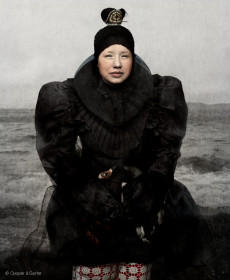 Yes, you achieve such narrative through primarily visual media. And, your works also incorporate other elements and influences; anthropology, costume design, painting, just for example. But what exactly did you each study?
Yes, you achieve such narrative through primarily visual media. And, your works also incorporate other elements and influences; anthropology, costume design, painting, just for example. But what exactly did you each study?
NG & SC Literature and music do play a pinnacle role in molding our inspiration and workflow. We often remember quite vividly the series of songs/sounds, poems, quotes or novels we listened to or read while creating an image or body of work, book, or exhibition.
As for our educations, we come from different backgrounds. I (Sarah) am a classically trained photographer with a BA from The Syracuse University and I worked in the music production industry in New York. I (Nina) studied architecture under Zaha Hadid at the University of Applied Arts, Vienna, and worked many years 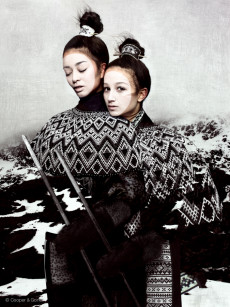 in graphic design and art direction.
in graphic design and art direction.
We then both took our Masters at the University for Design and Crafts in Göteborg, Sweden.
And, that is where you met and how you came to work together?
NG & SC Yes, early on we realized that we both shared a love for storytelling, tied to our experience or image of a place; general places but also our personal reflections and understandings of our own family histories. Our work has many indirect influences from the family farm of Nina’s grandmother in Styria, Austria, and Sarah’s family stories and photographs from her great, great-grandfather’s life on the frontier in 1880s US. This chain of history in our own lives, in relation to our creative motivation and personal narratives, plays a significant role in our work.
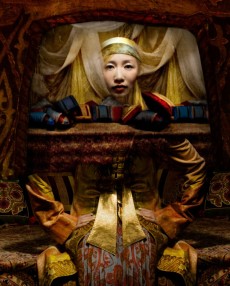 And, what do rural as opposed to urban settings offer as sites to begin your projects?
And, what do rural as opposed to urban settings offer as sites to begin your projects?
NG&SC We are simply drawn to the topography of wide-open spaces. You see their majestic presence in almost all of our work. There is a certain kind of closeness and focus that can be offered in remote places. Chance meetings are often more sincere and raw, and you find yourself drawn to an innate need to share, to fill the emptiness, at least for a moment. But it also has to do with the practical nature of being outside of the hustle and bustle of a city – enabling one to properly focus.
What do you mean to convey about the remote people and cultures presented in your art?
NG&SC Often, when we work we are observers. Intended or not, when coming to another culture you are ‘different’ by nature. The further away from your own home, the more obvious this difference, and 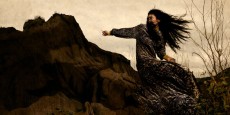 therefore, the more you become an observer. But with some of the people you meet you overcome that abyss. This occurs through curiosity about another, and more importantly, through recognition. You are touched by someone because you recognize and relate. It is the same with people we meet on our journeys. Those who leave the strongest impression and become muses in our work are the ones we could connect with emotionally. We stop observing and start to relate.
therefore, the more you become an observer. But with some of the people you meet you overcome that abyss. This occurs through curiosity about another, and more importantly, through recognition. You are touched by someone because you recognize and relate. It is the same with people we meet on our journeys. Those who leave the strongest impression and become muses in our work are the ones we could connect with emotionally. We stop observing and start to relate.
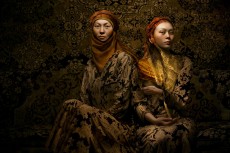 Our images strive for that recognition – a momentum through which the viewer feels an emotional connection with the image because it touches them, instead of just seeing the abyss of cultural differences. To be touched you need to relate. And to relate you need to recognize something in that picture or person that is already within you. So in our work we experience being both observers and companions.
Our images strive for that recognition – a momentum through which the viewer feels an emotional connection with the image because it touches them, instead of just seeing the abyss of cultural differences. To be touched you need to relate. And to relate you need to recognize something in that picture or person that is already within you. So in our work we experience being both observers and companions.
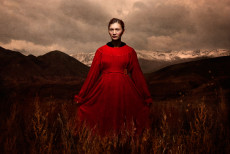 Yes, and that is how in addition capturing a person, your photographs tend to take a poetic-narrative license. How is this layer achieved through your process?
Yes, and that is how in addition capturing a person, your photographs tend to take a poetic-narrative license. How is this layer achieved through your process?
NG&SC A little back story: on our research travel to Kyrgyzstan we met Shola, the daughter in a family we stayed with. In the evenings over tea, we would talk with her about her life and situation. She began to tell us of her kidnapping and eventual abuse.
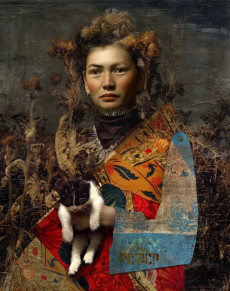 When she was 21 and a student of mathematics at the university in Bishkek, she became the victim of bridal kidnapping, a tradition that has resurfaced since the fall of the Soviet Union. About 80% of the women we met in Kyrgzstan had been kidnapped. Some as acts of ‘love’, some as brutal abductions. In Shola’s case, she was forcibly taken, becoming the bride of a man in a distant rural village. Stockholm’s Syndrome explains why she later fell in love with her kidnapper. After years of physical and psychological abuse though, she left him – allowed to take only one child with her. When we met Shola, she was in her early thirties, living with her family and her son Islam, she had been away from her husband for about a year.
When she was 21 and a student of mathematics at the university in Bishkek, she became the victim of bridal kidnapping, a tradition that has resurfaced since the fall of the Soviet Union. About 80% of the women we met in Kyrgzstan had been kidnapped. Some as acts of ‘love’, some as brutal abductions. In Shola’s case, she was forcibly taken, becoming the bride of a man in a distant rural village. Stockholm’s Syndrome explains why she later fell in love with her kidnapper. After years of physical and psychological abuse though, she left him – allowed to take only one child with her. When we met Shola, she was in her early thirties, living with her family and her son Islam, she had been away from her husband for about a year.
In Shola and the Cat, from the Kyrgyzstan series, the viewer is shown the real moment of when we captured Shola with our camera standing there in Kyrgyzstan holding her cat. Her 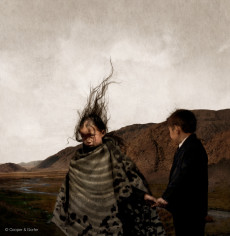 stance rigid, as she disliked the cat. But, there is a truth to Shola that you would not see in a regular photograph: the remnant of pain in her from her former kidnapping, her triumph in leaving him and the criticism she faces from the society she returned to. Through metaphorical cues and manipulation in the image, we bring forward these other moments of Shola’s life that are also a large part of the ‘her’ in the captured moment.
stance rigid, as she disliked the cat. But, there is a truth to Shola that you would not see in a regular photograph: the remnant of pain in her from her former kidnapping, her triumph in leaving him and the criticism she faces from the society she returned to. Through metaphorical cues and manipulation in the image, we bring forward these other moments of Shola’s life that are also a large part of the ‘her’ in the captured moment.
A photograph shows us the outside, rather than the inside. It shows us what we can see with our eyes, not necessarily what we can perceive in a moment about a person. But this is not how perception, intuition, memory or emotions work. So in our work, instead of being true to what we see, we extend, supplement, deconstruct and layer our images, to 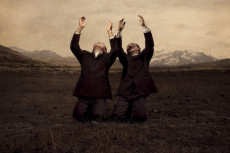 portray something we cannot see – the intangible. We are collectors, so we document reality, if such a thing exists, but our documentation undergoes a transformation. And maybe it is this that we find so compelling – the notion that reality only exists in the moment. Once you remember a certain moment, your subconscious has already altered it, blended it together with moments that came before or after, forgotten some details, added some emotion, saturated it with meaning or forgotten it altogether.
portray something we cannot see – the intangible. We are collectors, so we document reality, if such a thing exists, but our documentation undergoes a transformation. And maybe it is this that we find so compelling – the notion that reality only exists in the moment. Once you remember a certain moment, your subconscious has already altered it, blended it together with moments that came before or after, forgotten some details, added some emotion, saturated it with meaning or forgotten it altogether.
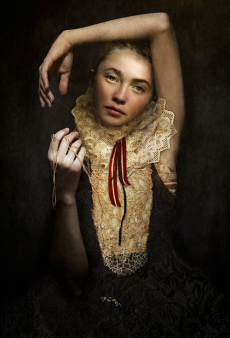 In the end, we want to transcend the life and sentiments of the person photographed and engage the viewer. A good image is as much about the one looking at the image as it is about the one portrayed. There must be a connection; otherwise you will walk away from an image uninvolved.
In the end, we want to transcend the life and sentiments of the person photographed and engage the viewer. A good image is as much about the one looking at the image as it is about the one portrayed. There must be a connection; otherwise you will walk away from an image uninvolved.
Your process has been described as involving a form of ‘directing’. Can you describe your multifaceted and incredibly choreographed process, start to finished-product?
NG&SC Most of our projects begin with a comprehensive research – travel involving interviews and photographic sessions; looking into the history and cultural heritage of a place or person. Our working method on location is layered, where we record and intuitively weave gathered stories and impressions together. Simultaneously, we visualize this collected material collaboratively with those we meet. The final artworks and books are the sum of all of these parts.
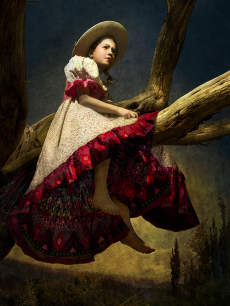 We strive for the images to feel exempt from time, embodying the collage of many moments in the life and history of a person. We do this by building on the memories or stories that are shared, the inherited history, the soul and feel of the actual location, the emotion of the person being portrayed in the exact moment the initial photograph was taken, followed by the predictions of who they will become after and combined with our own subjective thoughts and the baggage of our own histories.
We strive for the images to feel exempt from time, embodying the collage of many moments in the life and history of a person. We do this by building on the memories or stories that are shared, the inherited history, the soul and feel of the actual location, the emotion of the person being portrayed in the exact moment the initial photograph was taken, followed by the predictions of who they will become after and combined with our own subjective thoughts and the baggage of our own histories.
To achieve this we always plan and direct the shoots, taking them away from the spontaneity of documenting-by-chance. The process however, remains fluid and intuitive. We often give the person portrayed a character/role based on all the collected impressions. In the end, this character is often an embodiment of a part of themselves. The final artworks are also privy to this “directing” – within them we create a 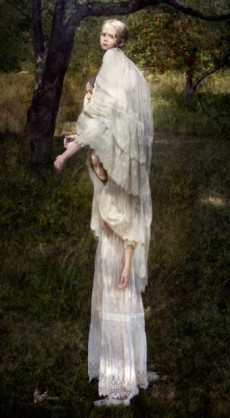 theatrical dialogue of interwoven layers and metaphors.
theatrical dialogue of interwoven layers and metaphors.
How is balance achieved in your collaborations?
NG&SC We initially began collaborating under the premise of no ownership. And, as a result, we’ve shared most of our initial skills that we consecutively brought to the table (graphic design, photography, architecture, creative direction, production, etc).
From this we have developed a shared signature-artistic style, as well as an ability to create and design our own books, curate exhibitions, and handle large-scale productions. At some point both of us have played every role in the process, while realizing the practicality of dividing up these shared skills sometimes (artist, assistant, producer, writer, graphic designer, production manager, CEO, bookkeeper). But it is also about respecting the initial individuality and differences of each other so that the work stays fresh, new and inspiring.
Why are children often featured? What do they 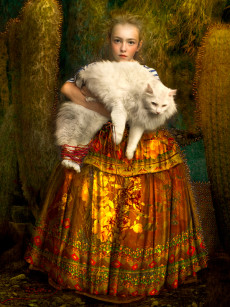 represent as narrators or otherwise in your work?
represent as narrators or otherwise in your work?
NG&SC Children have a fascination to them. They represent the innocent and at the same time they seem to stand for innate wisdom. They speak to us because they remind us of a part in ourselves. We have all been children once and somehow we bear this child with us through our lives.
In some of our projects, children play a bigger part because of the subject matter. Like in our new work about Argentina, where the sad story of the stolen children influenced our way of depicting the project. Other times, we feature children to tell a story to our own inner child.
Any anecdotes about working with children?
NG&SC We once worked with a classroom in a small rural school on the foothills of the Andes, in Argentina. We usually know immediately who we are interested in photographing and so we did this time. 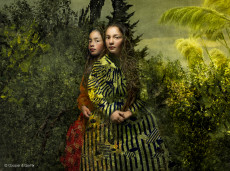 Amongst a group of girls, one was particularly stunning looking. We asked the teacher if we could photograph her and pointed towards the girl, but she misunderstood and got the whole group over, telling all these young girls that we would like to take their pictures. We felt so responsible to not make anybody feel excluded that we photographed them all, one by one, leaving our favorite girl to the end. And when we finally got to her, our time was over and they needed to return to class. We ended up with only two pictures of this amazing girl with the puzzled look.
Amongst a group of girls, one was particularly stunning looking. We asked the teacher if we could photograph her and pointed towards the girl, but she misunderstood and got the whole group over, telling all these young girls that we would like to take their pictures. We felt so responsible to not make anybody feel excluded that we photographed them all, one by one, leaving our favorite girl to the end. And when we finally got to her, our time was over and they needed to return to class. We ended up with only two pictures of this amazing girl with the puzzled look.
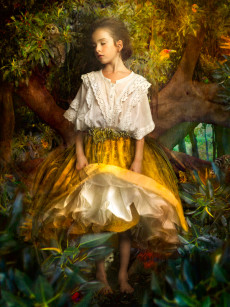 And, with the pride of nurturing self-esteem in all of them! What other medium might you explore in future collaborations?
And, with the pride of nurturing self-esteem in all of them! What other medium might you explore in future collaborations?
NG&SC Creative collaborations in architecture, film, curating, writing … the list goes on.
And, what are you working on now if you can divulge?
NG&SC Presently we are working on our fourth Volume series and book that deals with impressions from a travel to Argentina in 2011. And there are of course other ideas in the works, but nothing we can divulge as of yet!
-Larissa Zaharuk
More of Cooper and Gorfer’s work here: http://www.coopergorfer.com

